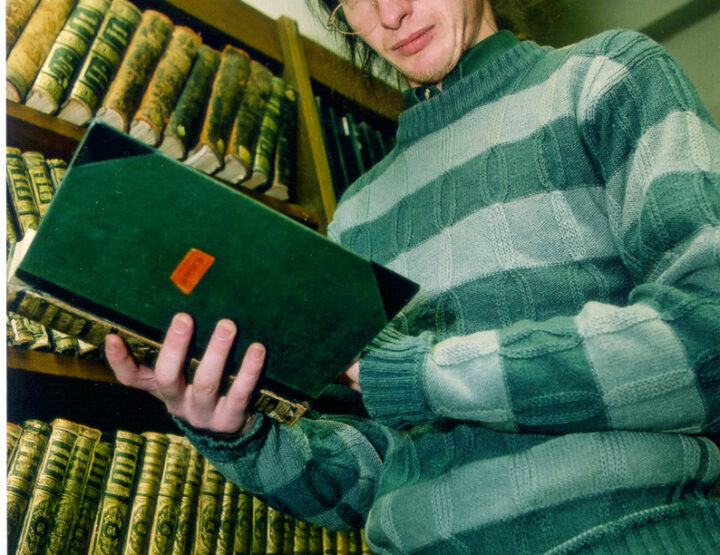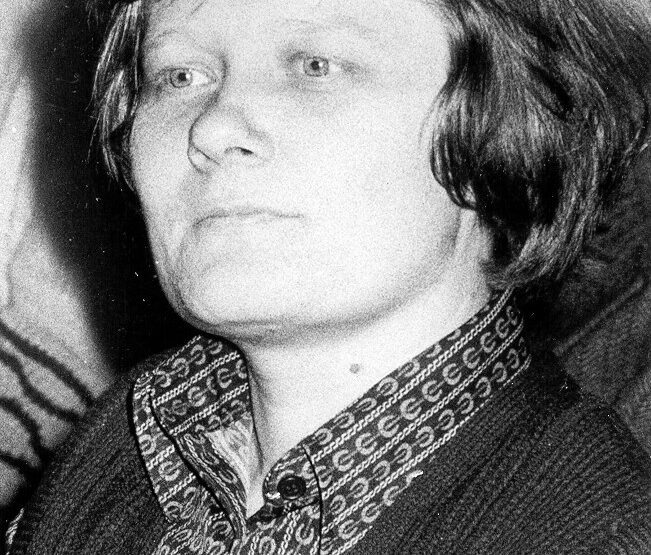Helga Nõu. Get Lost! (Tõmba uttu!)
Tallinn. Kupar, 2001. 206 pp
Each novel that Helga Nõu (1934) has written since her debut in 1965 has touched upon some painful topics in Estonian society. So far these have been the painful subjects of Estonian exile society. The scene of her new novel for young adults Get Lost! is set in Estonia. The subject of the novel is the visit of the pupils of an Estonian provincial school to a Swedish country school. The 15-year-old protagonist Joonas and his classmates Evelin and Liana tell about their concerns and troubles concerning this trip. All three are teenagers; they are lovesick and also dream about life in the world of the rich. The strength and wisdom of the heroes are on trial during the trip, after their return they all have changed.
The trip invokes both drama and comedy, the protagonist almost becomes a real hero, and at the same time he gets into several embarrassing situations and feels cheated. He has to tolerate the friendly superiority of the Swedish petty bourgeoisie towards the youths from the ex-Soviet republic. The author’s sharp pen points out the hardships in Estonian society that make young people find survival strategies of their own, make them adapt or cultivate defiance and bravado. With an almost sociological persistence Nõu reveals the factors that influence human nature, such as poverty, unemployment, violence, childhood harassment, etc. Her details are believable, and she uses rich and slightly exaggerated colours in depicting the welcome the young people receive in Swedish homes, and not so much in painting the scenes of Estonian reality. We believe that the hosts do not usually check the hair of their visitors from ‘Russia’ for lice, but in real life one could face even more unbelievable situations than in novels. Anyway, Helga Nõu is rather ironical towards Sweden, her homeland.
In addition to a masterfully plotted and executed structure, almost all Nõu’s novels still contain something irrational, playful or even mystical, something that really could not be there. In this book, Joonas suddenly realises that his long-dead grandfather helps him to carry on, and Liana is spiritually connected with Evelin, who had an accident and fell into an old disused mine pit.
The problems discussed in the novel could offer young people of the same age much material for serious thinking, starting from the effect of drugs up to the general human values. The book is dynamic and gripping, even didactic to some extent, especially in the Euro-optimistic final scenes, where Joonas comes to a promising business plan to ensure the future of his family. Nõu has a remarkable perception of language, and she is surprisingly skilled in using the slang of modern schoolchildren. This book offers a colourful, thrilling and believable insight into the problems and hopes for the future of young Estonians.
Debora Vaarandi. This Far-off Voice (See kauge hääl).
Tartu. Ilmamaa, 2000. 190 pp
Debora Vaarandi, born in 1916, is well justified to carry the title of grand old lady of Estonian poetry. Her work and her radiant personality make her an important part of the tradition of great Estonian poetesses, which began in the 19th century with Lydia Koidula and continues well into the modern times. In her verses, manifesting ”the roaring falls of my blood”, the critics have found close relations, foremost, with Marie Under, the best known and most translated Estonian poetess, who was nominated for the Nobel Prize several times.
This Far-off Voice is a selected collection, containing the best of Vaarandi’s oeuvre. She began writing when the fires and bloodshed of WWII were raging in the world, and reached climactic transfiguration in her later work of the 1970s. Vaarandi’s debut collection was published in 1945 under an appropriate title Under the Burning Sky (Põleva laotuse all). Those times favoured Soviet pathos and utopian belief in Communism. Vaarandi soon freed herself from the ties of Stalinism, her poem Simple things, written in 1957, principally opposes her earlier rhetorical poetry; it has been considered as a milestone in the renewing Estonian poetry of that period. That year also marks the beginning of timeless and constant popularity of Debora Vaarandi, without doubt, much helped by the musicality of her texts – many of them have become much loved songs.
The best part of Vaarandi’s poetry was published in a collection In the Light of the Wind (Tuule valgel) (1977), containing her later verses, which are all included in the present collection. In this period she mostly wrote free verse, full of bright images, and almost devoid of the temporal and definite connections. Everything has been drawn together into a single ‘excitement’ or ‘silence’, into the sound of the sea or an eternal journey. We can get some insight into the development of Vaarandi’s poetic voice to such metaphysical purity, if we consider also the authors she has translated: Edith Södergren, Anna Akhmatova and Georg Trakl.
But the best characterisation and acknowledgement of Debora Vaarandi’s poetry can be found in the words of Viivi Luik, a poet of the younger generation: ”In Estonian poetry, Debora Vaarandi personifies the rough open sea, the banners and flames, and heavy biblical clouds with flaming linings. Vaarandi’s open spaces do not indicate daydreaming. They are rolling and tremulous, we can truly believe that the horizon is hiding great hosts under flying banners. Whole nations are on the move with their tents and camels, columns of soldiers are marching somewhere, fires burst out and revolutions are kindled, new eras are born. Red is the colour of her open planes. /—/ But the wise and penetrating eyes of the poet are always and unavoidably following us between her verses.”
Ene Mihkelson. The Sleep of Ahasuerus (Ahasveeruse uni).
Tallinn. Tuum, 2001. 494 pp
A mediaeval legend tells us about a Jerusalem shoemaker Ahasuerus, or the Wandering Jew, who did not allow Christ rest in front of his house on his way to Golgotha, but made him go on. As a punishment, Ahasuerus was condemned to suffering and a curse was put upon him, from which only the Second Coming can free him. The legend of Ahasuerus has proved to be a productive source for literature just for the double paradox embedded in it: eternal life as the ultimate goal of human striving becomes a curse, but the curse entails a promise for redemption.
Ene Mihkelson’s novel The Sleep of Ahasuerus concentrates upon the question what actually happened on the 16th of February 1953, when the protagonist’s father – a forest brother, fighting against Soviet power – was killed in the Kolga (refers to Golgotha) battle. The murdered freedom fighter cannot find peace even more than fifty years after his death; old shadows, rising from the family tradition and historical sources have their effect on the modern times. Retrospection reaches back as far as into the 18th century, hinting at the Baltic-German roots of the protagonist. Suspension is added by the fact that the death of the forest brother had officially been registered only much later, on the 29th of February 1958, but the year of 1958 was not a leap year. The Ahasuerus-like suffering transforms from the killed forest brother to the main hero of the novel. She feels the curse and tries to liberate herself by pondering on the past events and talking about them. She sleeps with open eyes and sees visions that are hard to bear.
The novel is written as an inner monologue, it seems to document an investigation going on in the soul of the hero, there are many reflections and double takes. In the most emotional episode the protagonist recalls the reflection of herself in the depth of a well: the NKVD members let the child toddle by the well (will she fall in, or won’t?), trying to lure out her parents hiding nearby.
The Sleep of Ahasuerus skilfully balances on the border between Estonian history and fiction. By copy and paste functions of the word processor, scores of pages of documents and authentic archival materials have in Italics been inserted into the text, indicating the games played by British intelligence service and Soviet intelligence service in the occupied post-war Estonia.
The great Estonian poet of the 19th century Juhan Liiv has said that those who do not remember the past live without the future. Mihkelson’s novels bring this truth home to us today: archival materials can blackmail us today and tomorrow. This happens, naturally, only if we have not learned their contents and do not remember our past. Remembering, bringing out from oblivion and giving names has always been the imperative in Mihkelson’s work, consequently, the soul searching in The Sleep of Ahasuerus leads to the very bottom, to the ultimate understanding of the essence of the games of denial, and the life of those times. The whole book is about the fight against forgetting, although the revealing of the past is usually painful. Once again, Mihkelson’s sado-masochist conception of history, already pointed out by the critics of her earlier works, finds confirmation.
It has been claimed that Soviet repressions mean as much to the Estonians as the Holocaust to the Jews. In The Sleep of Ahasuerus Mihkelson portrays the moral holocaust of Estonian people and analyses its effect on psyche; she describes the curse and indicates the opportunity of getting rid of it by restoring the memory. The novel’s thrilling plot, intertextual poetics and deep ethics have inspired the critics to call it the last great Estonian novel of the 20th century and the first great Estonian novel of the 21st century. For this novel Ene Mihkelson was given the great annual award of the Estonian Cultural Endowment of the year 2001.
© ELM no 14, spring 2002




